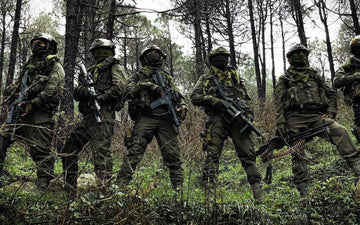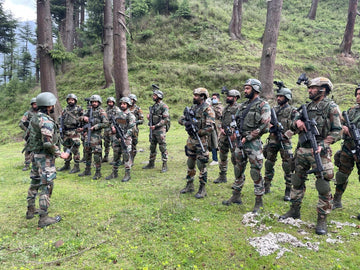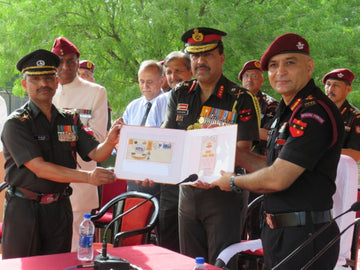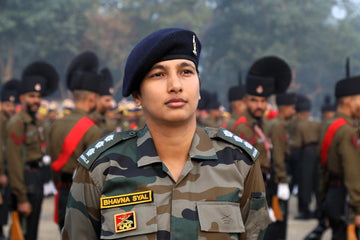The discussion around gender inclusivity in the armed forces has gained significant momentum over recent years, especially in nations like India that have rich military traditions. One of the most compelling areas of dialogue is whether women can serve as combat soldiers in elite forces like the Para Special Forces (Para SF) of the Indian Army. As it stands, the stringent regulations and prevailing norms still impose barriers to female participation in combat roles. This article delves into the current landscape, exploring the eligibility criteria, training regimes, and the roles women can play within the Indian Para SF, all while examining the social and operational implications of these policies.
Historical Context
The Indian Armed Forces have a storied legacy, evolving through decades of conflicts, peacekeeping missions, and humanitarian assistance. Historically, women have served in various capacities, often sidelined from direct combat roles due to prevailing societal norms and military protocols. The Indian Army began enlisting women in roles such as nurses and support staff during World War II, gradually expanding female participation in administrative and medical roles.
As of today, the military landscape is changing, with women increasingly asserting their capabilities in non-combat positions. Despite this progress, the opportunity to serve in combat roles, particularly in elite special forces like para commandos, remains limited for women. The question at hand is not merely legal or procedural; it intertwines with societal perceptions, military readiness, and the evolving role of women in defence.
Current Eligibility and Restrictions
Combat Arms and Regulations
Women in the Indian Army currently face significant restrictions regarding their enlistment in combat arms. According to the latest regulations, they are not commissioned into combat roles such as Infantry, Mechanized Infantry, or the Armoured Corps. This limitation extends to the Parachute Regiment, which houses the elite Para SF commando units. Although women can volunteer for training within special forces, the actual eligibility to become a combat soldier in these units remains ineffective, underscoring the disparity.
Key Points on Eligibility:
- No Combat Commissioning: Women are not commissioned into combat branches, including the Para SF.
- Voluntary Training Opportunities: Women can volunteer to undertake special forces training but are subject to rigorous qualifying assessments.
- Lack of Qualifications: To date, no woman has achieved the qualifications necessary to join the Para SF as a commando.
Current Roles for Women in the Indian Army
The narrative around women in the military is gradually transforming. Women serve in a variety of roles in the Indian Army, primarily in non-combat capacities, where they contribute critical skills and services. For example, women hold roles in medical support, engineering, and administrative capacities, with some like Captain Deeksha C. Mudadevannanavar making history as the first female officer to serve within a special forces outfit in a medical support role. However, this does not qualify as a combatant position, and such roles are often perceived as subservient within the military hierarchy.
Key Roles Available:
- Logistics and Support: Women are actively involved in logistics, ensuring that special forces can operate smoothly.
- Medical Assistance: Medical officers play integral roles in providing care to those injured during operations, although they are not in the combat line.
- Training and Administration: Some women are involved in the training and administrative aspects but do not engage in frontline operations.
Training and Qualification
Rigorous Selection Process
Women can express their interest in joining special forces training, provided they meet the Qualitative Requirements (QRs) set forth by the Indian Army. Despite this possibility, the training process is notoriously difficult. It is structured to be physically and mentally taxing, aimed at identifying the most capable individuals to serve in high-stakes environments.
Training Regime:
- Physical Endurance Tests: Candidates undergo severe physical assessments that include long-distance runs, obstacle courses, and extensive survival training.
- Mental and Tactical Drills: The training also emphasizes mental resilience and tactical awareness, vital for any commandos engaging in dangerous operations.
Lack of Female Qualification
While women have successfully volunteered for training in other branches, such as the Indian Air Force and Navy, instances of passing specialized courses remain scarce. For example, two female officers in the Indian Air Force attempted special forces training but could not complete the course. Similarly, 20 women sailors participated in talent assessments for Navy special forces, but none qualified for advanced training. These failures to qualify raise challenging questions regarding the physical demands placed within the context of existing policies.
Case Studies and Real-World Applications
Examining real-world scenarios where women have attempted to break barriers in armed forces further elucidates the landscape of female participation in elite special units.
Example 1: Indian Air Force Attempts
Two women officers from the Indian Air Force undertook special forces training but ultimately failed to qualify. While their participation marked a significant step in attempting to shatter glass ceilings, the physical and mental rigors showcased the current limitations faced by women pursuing similar paths in the Indian military.
Example 2: The Balidan Badge Controversy
The Balidan badge, often associated with the Para SF, became a focal point of contention regarding women in the Indian Army. Some individuals perceived the badge as an emblem of combat service, leading to confusion and debate. However, it is essential to clarify that women within special forces frameworks mainly serve in support capacities, indicating that these badges do not signify combat qualifications.
Statistical Data and Research Insights
The lack of representation of women in combat roles has been a topic of study among military researchers and advocates for gender equality. A broader trend across many nations, including members of NATO, has begun to recognize the importance of inclusive policies.
Key Statistics:
- According to 2020 data, women constitute approximately 3% of the total strength of the Indian Armed Forces, a stark underrepresentation in combat arms.
- Studies show that nations that integrate women into combat roles often experience improved operational performance and morale.
Comparative Analysis
Analyzing gender integration in elite forces can be further contextualized by comparing India with international counterparts.
Comparison with global peers:
- United States: Women can serve in combat roles, including elite units like Navy SEALs. A report from the Center for American Progress estimated that 11% of active-duty military personnel are women, comprising multiple combat platoons.
- Israel: A nation recognized for its egalitarian military policies, Israel actively places women in combat roles across various infantry units, showing a high success rate in both training and operational effectiveness.
Challenges and Solutions
While the current regulations restrict the participation of women in combat roles, various challenges must be addressed to pave the way for future improvements.
Key Challenges:
- Physical Standards: The prevailing belief that women might not meet the physical demands of special operations needs reevaluation based on evolving data and capabilities.
- Cultural Resistance: Traditional mindsets regarding gender roles in the military continue to undermine policy reform and acceptance of women in combat.
Proposed Solutions:
- Policy Reformation: Advocacy for policy changes to allow women to enter combat training, supported by factual performance data and success stories from gender-inclusive forces worldwide.
- Enhanced Training Programs: Specialized training programs that consider gender differences in physical capabilities, assisting women in meeting combat requirements.
Future Trends and Predictions
The outlook for women in the Indian Armed Forces indicates potential change. As the global discourse around gender equality evolves, so does the opportunity for women to gain more substantial roles within the military framework.
What Lies Ahead:
- Increased Female Representation: As societal norms shift and a younger generation embraces equality, we expect to see a higher acceptance of women in combat roles, potentially influencing policy change.
- Improved Training Integration: Enhanced programs focusing on inclusive training will yield a stronger pipeline of capable female candidates for special forces.
Conclusion
While the prospect of women serving as Para SF commandos remains restricted as of today, the conversation surrounding their eligibility reflects a broader dialogue about gender equality in the military. The barriers that women face, from existing regulations to cultural perceptions, require strategic advocacy and innovation to overcome.
As society’s views on gender roles evolve and military practices continue to adapt, female participation in combat roles may no longer be a distant dream. Recognizing and nurturing the capabilities of women has the potential to enhance not only operational effectiveness but also the holistic growth of the Indian Armed Forces.
Moving forward, these discussions encourage a critical examination of policies and inspire actionable change, paving the way for future generations to serve in roles that align with their aspirations, irrespective of gender. The pursuit of equality in the ranks cannot merely be aspirational—it must reflect a foundational commitment to reform.





